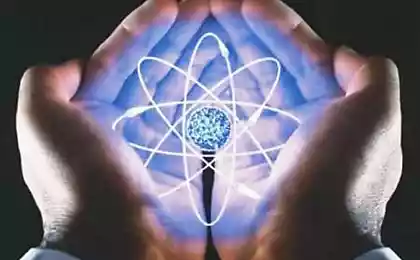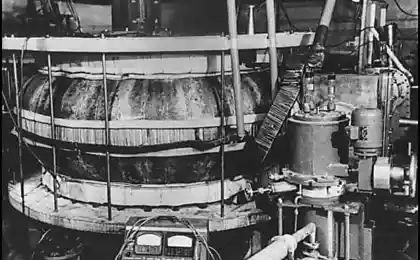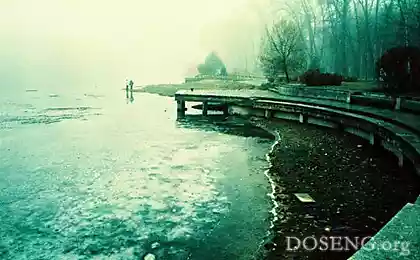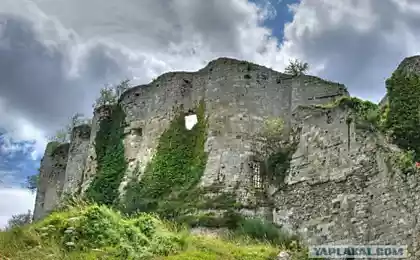605
Independent reproduction of the cold fusion reactor, Andrea Rossi in Russia
You may have already read about the cold fusion reactor, Andrea Rossi. This reactor is extremely controversial, and many regard him as a fraud who does not deserve serious consideration and is contrary to the fundamental laws of nuclear physics.
However, there is growing evidence that the reactor really works. And now a working reactor from Russia...

But first a bit of history. I first heard about Andrea Rossi and his reactor in January 2011, when he held the first open demonstration of his device (E-Cat energy catalyzer-English) at the University of Bologna. Since I follow this topic. Andrea Rossi did not disclose details of the internal structure of the reactor, as it is a trade secret. Currently, all of the rights to this device owned by an American company Industrial Heat, where Rossi leads all research and development activities in respect of reactor.
There are low-temperature (E-Cat) and high temperature (Hot Cat) version of the reactor. The first for temperatures about 100-200 °C, the second for temperatures of the order of 800-1400 °C. currently, the company has sold low-temperature reactor 1mW unnamed customer for commercial use and, in particular, in this reactor, Industrial Heat testing and debugging in order to launch a full-scale industrial production of such energy blocks. As claimed by Andrea Rossi, the reactor is operated mainly by the reaction between Nickel and hydrogen, which is the transmutation of isotopes of Nickel with a large amount of heat. I.e., some isotopes of Nickel are attracted to other isotopes. Nevertheless, a series of independent trials, the most informative of which was a test version of the high temperature reactor in the Swiss city of Lugano.
On the website E-Cat World has published an article about the independent reproduction of Rossi's reactor in Russia. The same article contains a reference to the report "Study analogue high-temperature heat generator Rossi physics Parkhomov Alexander Georgievich. Report prepared for the all-Russian physics seminar "Cold fusion and ball lightning", which was held on 25 September 2014 at the Russian University of friendship of peoples.
In the report, the author presented his version of Rossi's reactor, data on its internal structure and the tests. Main conclusion: the reactor really produces more energy than it consumes. The ratio of allocated heat to the consumed energy amounted to 2.58. Moreover, about 8 minutes, the reactor worked without input power, once the power lead is blown, thus producing about a kilowatt of thermal power output.
Key findings:
A. G. Parkhomov managed to make a continuously operating reactor with the pressure test.
Finally managed to make a continuously operating reactor. Temperature 1200оС reached at 23:30 on 16 March after a 12 - hour gradual heat, and kept still. The power of the heater is 300 watts, COP=3.
For the first time successfully managed to integrate the installation of the pressure gauge. At slow heating maximum pressure of 5 bar was achieved at 200oC, and then the pressure was decreased and at a temperature of about 1000 ° C became negative. The most powerful vacuum of about 0.5 bar was at a temperature of 1150оС.
During prolonged continuous operation there is no possibility round the clock to add water. So I had to abandon used in the previous experiments calorimetry is based on measuring the mass of evaporated water. The determination of thermal coefficient in this experiment is performed by comparing the consumed electric power in the presence and absence of the fuel mixture. Without fuel temperature 1200оС is achieved at a power of about 1070 watts. With fuel (630 mg Nickel +60 mg of lithium aluminum hydride), such a temperature is reached at a power of about 330 watts. Thus, the reactor produces about 700 watts of redundant power (COP ~ 3,2). (Explanation Parkhomov A. G., a more accurate value of COP requires more detailed calculation.)
Author Roman Rodionov
P. S. And remember, only by changing their consumption - together we change the world! © Join us at Facebook , Vkontakte, Odnoklassniki
Source: geektimes.ru/post/243787/
However, there is growing evidence that the reactor really works. And now a working reactor from Russia...

But first a bit of history. I first heard about Andrea Rossi and his reactor in January 2011, when he held the first open demonstration of his device (E-Cat energy catalyzer-English) at the University of Bologna. Since I follow this topic. Andrea Rossi did not disclose details of the internal structure of the reactor, as it is a trade secret. Currently, all of the rights to this device owned by an American company Industrial Heat, where Rossi leads all research and development activities in respect of reactor.
There are low-temperature (E-Cat) and high temperature (Hot Cat) version of the reactor. The first for temperatures about 100-200 °C, the second for temperatures of the order of 800-1400 °C. currently, the company has sold low-temperature reactor 1mW unnamed customer for commercial use and, in particular, in this reactor, Industrial Heat testing and debugging in order to launch a full-scale industrial production of such energy blocks. As claimed by Andrea Rossi, the reactor is operated mainly by the reaction between Nickel and hydrogen, which is the transmutation of isotopes of Nickel with a large amount of heat. I.e., some isotopes of Nickel are attracted to other isotopes. Nevertheless, a series of independent trials, the most informative of which was a test version of the high temperature reactor in the Swiss city of Lugano.
On the website E-Cat World has published an article about the independent reproduction of Rossi's reactor in Russia. The same article contains a reference to the report "Study analogue high-temperature heat generator Rossi physics Parkhomov Alexander Georgievich. Report prepared for the all-Russian physics seminar "Cold fusion and ball lightning", which was held on 25 September 2014 at the Russian University of friendship of peoples.
In the report, the author presented his version of Rossi's reactor, data on its internal structure and the tests. Main conclusion: the reactor really produces more energy than it consumes. The ratio of allocated heat to the consumed energy amounted to 2.58. Moreover, about 8 minutes, the reactor worked without input power, once the power lead is blown, thus producing about a kilowatt of thermal power output.
Key findings:
- The work continues, carried out new tests, the effect of generating excessive heat repeats.
- Conducted a series of calibration tests with electric heaters and the reactor without fuel. In this case, as expected, the output thermal power is equal to input electric power.
- The main problem at the moment is a local overheating of the reactor, causing heating coil burns out and even the reactor itself can burn right through (although the melting point of corundum ceramics, from which it is made, is more than 2000C). It has not yet been possible to carry out sufficiently long tests.
A. G. Parkhomov managed to make a continuously operating reactor with the pressure test.
Finally managed to make a continuously operating reactor. Temperature 1200оС reached at 23:30 on 16 March after a 12 - hour gradual heat, and kept still. The power of the heater is 300 watts, COP=3.
For the first time successfully managed to integrate the installation of the pressure gauge. At slow heating maximum pressure of 5 bar was achieved at 200oC, and then the pressure was decreased and at a temperature of about 1000 ° C became negative. The most powerful vacuum of about 0.5 bar was at a temperature of 1150оС.
During prolonged continuous operation there is no possibility round the clock to add water. So I had to abandon used in the previous experiments calorimetry is based on measuring the mass of evaporated water. The determination of thermal coefficient in this experiment is performed by comparing the consumed electric power in the presence and absence of the fuel mixture. Without fuel temperature 1200оС is achieved at a power of about 1070 watts. With fuel (630 mg Nickel +60 mg of lithium aluminum hydride), such a temperature is reached at a power of about 330 watts. Thus, the reactor produces about 700 watts of redundant power (COP ~ 3,2). (Explanation Parkhomov A. G., a more accurate value of COP requires more detailed calculation.)
Author Roman Rodionov
P. S. And remember, only by changing their consumption - together we change the world! © Join us at Facebook , Vkontakte, Odnoklassniki
Source: geektimes.ru/post/243787/























